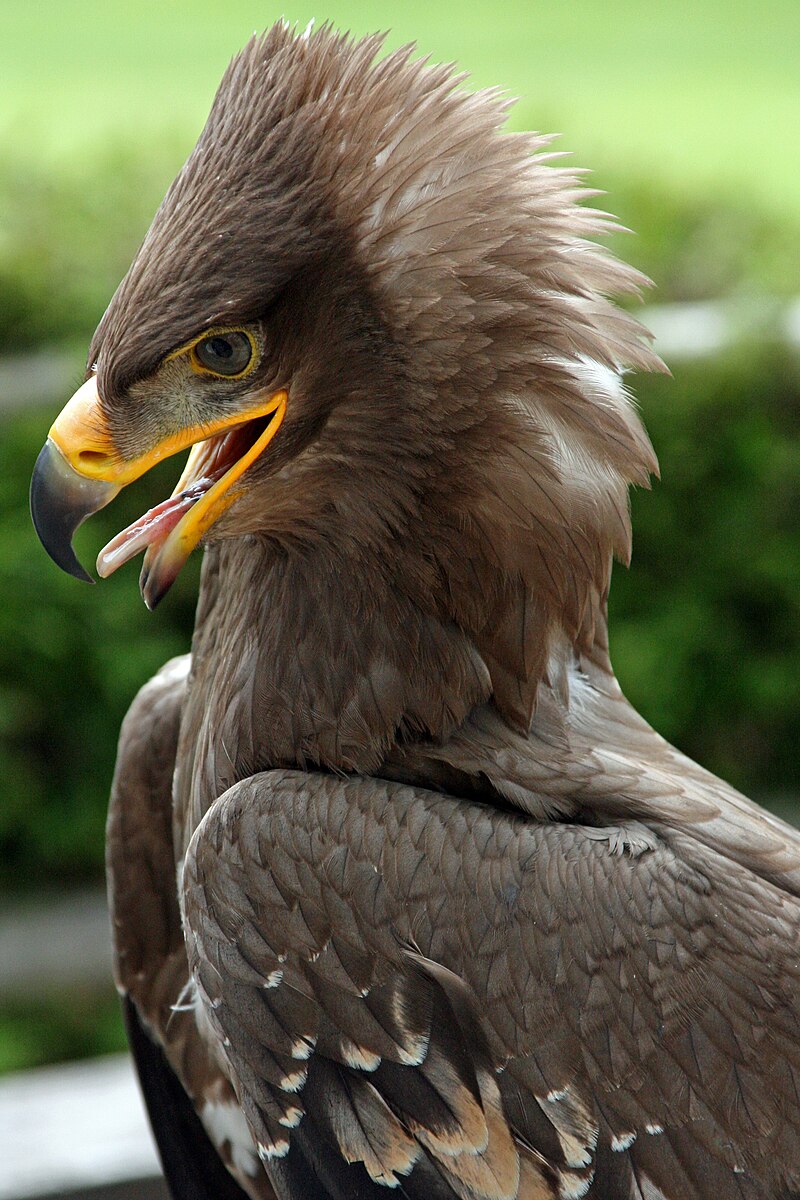The Steppe Eagle (Aquila nipalensis) is a large diurnal bird of prey that inhabits the steppes, deserts, and semi-deserts of Europe, Asia, the Middle East, and Africa. With a global population estimated to be around 2,600 breeding pairs in the Volga-Urals region, 2,000 breeding pairs in Dahuria (transboundary Russian-Mongolian population), and up to 18,000 pairs in Mongolia, the species is currently listed as Endangered due to significant population declines over the past few decades.
Global Population Estimates
The global population of Steppe Eagles is estimated as follows:
| Region | Breeding Pairs |
|---|---|
| Volga-Urals | 2,600 |
| Dahuria (Russia-Mongolia) | 2,000 |
| Mongolia | Up to 18,000 |
The species is entirely migratory, with birds from Russia and Kazakhstan wintering in Pakistan, India, and parts of Africa, while those from Mongolia and China migrate to the Indian subcontinent and Southeast Asia.
Habitat Loss and Fragmentation
 Image source: Steppe Eagle by Fimb
Image source: Steppe Eagle by Fimb
The conversion of steppes to agricultural land is a major threat to the Steppe Eagle population, leading to habitat loss and fragmentation. In Russia and Kazakhstan, overgrazing and undergrazing have resulted in a reduction of suitable habitat and food availability, further impacting the species’ breeding success.
Powerline Collisions and Electrocution
Steppe Eagles are highly vulnerable to powerline collisions and electrocution, with a study in western Kazakhstan finding that the species was the raptor most frequently electrocuted by power lines. The construction of dangerous electric powerline structures and the lack of protective devices contribute to this issue.
Human Persecution and Illegal Hunting
Direct persecution, including the taking of young eagles from nests for sale in western European countries, and illegal hunting in countries where the species is legally protected, pose significant threats to the Steppe Eagle population.
Conservation Efforts
Conservation actions underway for the Steppe Eagle include CMS Appendix I & II, CITES Appendix II, Bern Convention Appendix II, and Raptors MOU Category 1 listings. In some wintering sites of Oman, tagging and tracking programs are in place to monitor the species’ movements and behavior. Proposed conservation actions include protecting remaining grassland steppes in Europe and the rest of its range, replacing or fitting dangerous electric powerline constructions with protective devices, and addressing human persecution and illegal hunting.
Conclusion
The Steppe Eagle population faces significant challenges, including habitat loss, powerline collisions, and human persecution. Conservation efforts are underway, but more needs to be done to ensure the long-term survival of this majestic bird of prey. By understanding the current population status and the threats facing the Steppe Eagle, we can work towards effective conservation strategies to protect this species for generations to come.
References:
- BirdLife International. (2022). Steppe Eagle (Aquila nipalensis). Retrieved from http://datazone.birdlife.org/species/factsheet/steppe-eagle-aquila-nipalensis/text
- Wikipedia. (2022). Steppe Eagle. Retrieved from https://en.wikipedia.org/wiki/Steppe_eagle
- The Peregrine Fund. (2022). Steppe Eagle. Retrieved from https://peregrinefund.org/explore-raptors-species/eagles/steppe-eagle
- U.S. Geological Survey. (2021). Steppe eagle Aquila nipalensis. Retrieved from https://www.usgs.gov/publications/steppe-eagle-aquila-nipalensis
- Eurasian Wildlife and Peoples. (n.d.). Steppe Eagle. Retrieved from https://www.ewandp.org/programs/raptor-conservation/steppe-eagle/.

